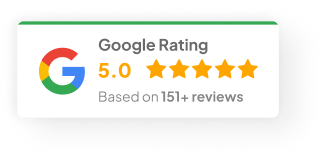16 Sep 25
Why Most Web Design for Photographers Fail (And How to Fix Them)
A great photo should do the heavy lifting. It should grab attention, spark emotion, and tell its own story. But here’s the reality—if the website doesn’t back it up, people leave. Fast. And most of the time, they don’t come back.
That’s where things go wrong for a lot of photographers. The portfolio looks beautiful, but the site around it? Clunky. Confusing. Or just plain forgettable. Let’s walk through the main reasons these sites flop, and how to actually fix them.
The Biggest Problems with Photographer Websites
1) User Experience Gets Ignored
Plenty of sites look great at first glance, but once you try to click around, it’s a mess. Giant image sliders. Drop-down menus stacked five levels deep. Background videos that chew up bandwidth.
The numbers tell the story: 53% of mobile users bail if a page takes longer than 3 seconds to load. With photography, where images are the whole point, this becomes a big deal.
2) Mobile Isn’t a Priority
Right now, more than 62.45% of global web traffic is mobile. And yet, a ton of photographers still design for desktop first. On a phone, the images don’t resize, buttons are tiny, and people have to pinch and zoom. That’s a fast track to losing half your audience.
3) No Call-to-Action
This one’s huge. A portfolio with no “next step” is just a digital art gallery. Looks nice, sure—but what happens after the scroll? Without a clear button to book, a form to fill out, or even a phone number in the header, visitors drift away.
4) Same Old Templates
Squarespace, Wix, WordPress—they’re fine starting points. But the truth is, those templates all look the same after a while. Worse, they’re not set up to convert. They’ll showcase your work, but they won’t nudge anyone to actually hire you.
5) SEO Left Behind
It doesn’t matter how pretty a site is if no one can find it. Too many photographer sites forget the basics:
- Alt text on images
- Optimized titles and descriptions
- Fast load times
- Local keywords
Without that foundation, you’re buried under competitors who did the extra work.
Fixing What’s Broken
1) Clean Up the User Experience
Navigation should be obvious. No gimmicks, no confusion. Within seconds, a visitor should know who you are, what you do, and how to get in touch.
2) Think Mobile First
Compress images so they load quick but still look sharp. Build with responsive layouts so the site flows naturally on any screen. Mobile shouldn’t be the afterthought—it’s the main stage.
3) Add Real Calls-to-Action
Make it easy for people to take the next step. Examples that work:
- A “Book Now” button under the gallery
- An inquiry form that’s short and sweet
- Contact info that’s visible without scrolling
4) Brand It Properly
Consistent fonts, colors, and layout choices turn a generic site into something memorable. A custom design that matches the style of your photography makes the difference between “just another site” and a strong brand presence.
5) Don’t Skip SEO
Every image deserves descriptive alt text. Each page should have keywords that connect you with local clients searching for a photographer. And yes—speed matters here too.
Why Hire a Web Design Agency
Sure, you can keep tweaking a DIY template. Plenty of photographers do. But a good web design agency will save months of frustration. They know how to:
- Balance design with performance
- Build fast, responsive layouts
- Structure calls-to-action that actually get clicks
- Handle SEO in the background
That means less tinkering, more time spent doing the work you actually enjoy—shooting photos.
How to Choose the Right One
Not every agency is worth the investment. Look for:
- Proven results with conversion-driven design
- Experience working with creative professionals
- A custom approach, not cookie-cutter templates
- Ongoing support after launch
- Reviews and testimonials that back it all up
Why Chromatix Works for Photographers
Chromatix has been at this for over a decade. They specialize in websites that look great and convert visitors into clients. Their focus has always been on the details that matter: fast load times, SEO, mobile readiness, and design that reflects the photographer’s style.
Instead of spinning your wheels on a DIY site, working with a team like this gives you a portfolio that feels polished and professional—and actually drives business.
Conclusion
Most photography websites fail because they put the spotlight on looks and ignore everything else. But a website isn’t just a gallery. It’s a business tool. With the right strategy—or the right partner—it can bring in steady clients while still showcasing your best work.
If it’s time to build a site that does more than just look pretty, partner with a web design agency like Chromatix. Their team knows how to turn portfolios into booking machines.
What’s the one thing you wish your website did better right now?


